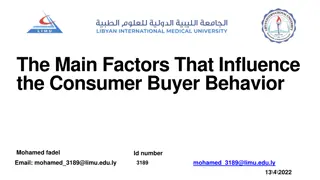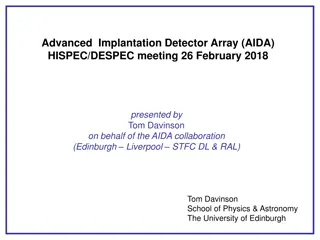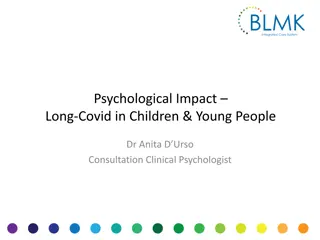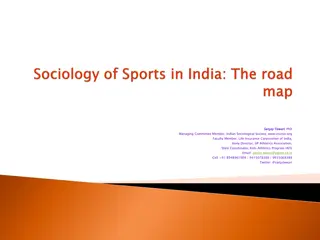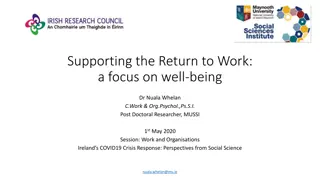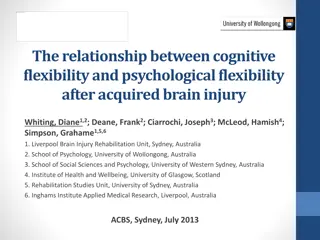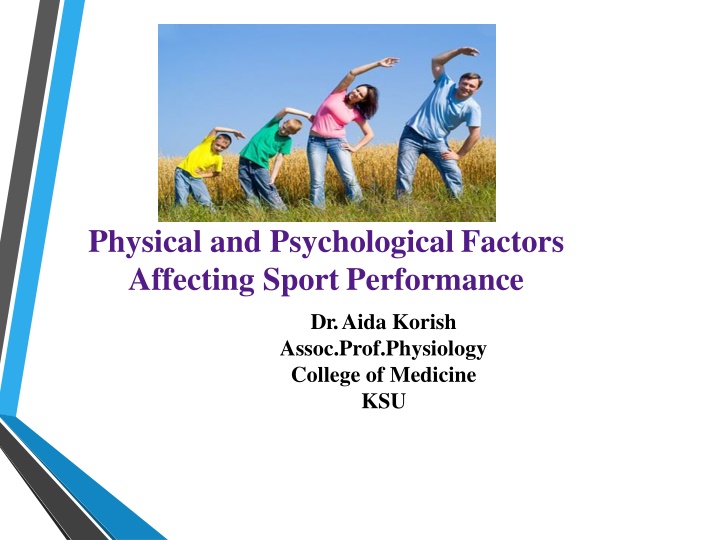
Factors Affecting Sport Performance and Metabolic Pathways in Muscle
Explore the impact of physical and psychological factors on sport performance, muscle metabolic systems, and ATP regeneration. Learn about energy sources for muscle contraction and the interaction of different energy systems during exercise. Understand key concepts such as phosphocreatine-creatine system, aerobic and anaerobic pathways, oxygen debt, and effects of smoking on pulmonary ventilation. Gain insights into the effects of drugs on athletes and analyze changes in body fluids and salts during exercise.
Download Presentation

Please find below an Image/Link to download the presentation.
The content on the website is provided AS IS for your information and personal use only. It may not be sold, licensed, or shared on other websites without obtaining consent from the author. If you encounter any issues during the download, it is possible that the publisher has removed the file from their server.
You are allowed to download the files provided on this website for personal or commercial use, subject to the condition that they are used lawfully. All files are the property of their respective owners.
The content on the website is provided AS IS for your information and personal use only. It may not be sold, licensed, or shared on other websites without obtaining consent from the author.
E N D
Presentation Transcript
Physical and Psychological Factors Affecting Sport Performance Dr. Aida Korish Assoc.Prof.Physiology College of Medicine KSU
Objectives By the end of this lecture students should be able to : 1.Identify the muscle metabolicsystemsand the nutrientsused in exerciseto regenerateATP: Phosphocreatine-creatinesystem. Glycogen-lactic acidsystem. Aerobicsystem. 2. Explain the recovery of the muscle metabolicsystemsafter exercise andthe phenomena of oxygen debt. 3. Discus the effectsof smoking on pulmonary ventilation in exercise. 4. Correlatebetweenheart diseases and the athletic performance in oldage. 5.Analyze the changesin body fluids and salts in exercise. 6.Interpret the effects of drugs onathletes.
Metabolic pathways in skeletal muscle Adenosine triphosphate (ATP) is the only energy source used directly by muscles for contractileactivities. The demand and the ATP production vary according to the type of work done. At rest, a muscle cell contains a small store of ATP, but it cannot rely on this ATPonce it beginscontracting. Muscle cellmust get readytoATP production to keep pace with the increased rate ofutilization. mechanism of
Energy for Muscle Contraction Mitochondria in the muscleconverts glucose, fatty acids, and amino acids intoATP Adenosine-PO3 ~ PO3 ~ PO3 Each of the last 2 high energy phosphate bonds inATP stores7300 caloriesper mole ofATP. All ATP stored in the muscle issufficient for only 3 seconds of muscle power. (Enough for half of a 50-meterdash). So resting muscles must haveenergy stored in other forms e.g Creatine Phosphate (CP), glycogen, etc. 4
ATPregeneration As we begin to exercise, we almost immediately use our stored ATP within fewseconds. ATPis regeneratedfromADP by 3 pathways: 1Direct phosphorylation ofADPby creatine phosphate (CP). 2 Anaerobic pathway(glycolysis lactic acid). 3Aerobic oxidation of fatty acids in the mitochondria 5
INTERACTION OF ENERGY SYSTEMS Immediate Short-term Long-term
1-Phosphocreatine-creatine system (creatine Po3) CP: Contain high energy phosphate bond of10,300 calories/mole. Direct Direct phosphorylation phosphorylation Coupled Coupled reaction Phosphate Phosphate (CP) reaction of (CP) and of creatine creatine and ADP ADP Energy Energy source: source:CP Most muscle cells have 2-4 timesas much CPasATP. Creatine kinase Energy transfer from CPto ATP occurs within a small fraction of a second. Creatine Oxygen use: Oxygen use:None Products: Products: 1 ATP per CP,creatine Duration Duration of of energy energyprovided: provided: Energy of muscleCP is immediatelyavailablefor contraction just asstored energy ofATP. 7
Phosphagen energysystem: Formed of combined amountsof cell ATP +CP Together provide maximal muscle power for 8-10 seconds (enough for 100 meterrun). Energy of phosphagen system is useful for maximal short bursts of muscle power ( 8-10 seconds).
2- Glycogen-LacticacidSystem (anaerobic Metabolism) Anaerobic Anaerobic pathway pathway Glycolysis Glycolysis and and lactic lactic acid acid for formation mation Energy Energy source: source:glucose Glucose (from glycogen breakdown or delivered from blood) Anaerobic Without oxygen Source of energy: Carbohydrate (glycolysis) Lactate &ATP Glycolysis incytosol 2 Pyruvic acid net gain Released to blood Lactic acid Oxygen use: Oxygen use:None Products: Products: 2 ATP per glucose, lacticacid Duration Duration of of energy energy provided: seconds, or slightly more provided: 30-40 9
Anaerobic Glycolysis (Glycogen-Lactic acid system) Is the primary energy source for peak (sever) muscular activity. It provides 1.3-1.6 minutes of maximal muscle activity. Produces 2ATPmoleculesper moleculeof glucose. The process of anaerobicmetabolismcan maintainATP supply for about 45-60s. Glycogen Glucose 2 pyruvic acid (2ATP+ 2 NADH) 2 Pyruvic acid 2 lacticacid (2 NAD+) Lactic acid diffuses out of muscles blood taken by the liver Glucose (by gluconeogenesis) blood taken by the muscleagain.
Anaerobic metabolism is inefficient Why? Large amounts of glucose are used for very small ATPreturns. Lactic acid is produced whose presence contributes to muscle fatigue. Which type of sportsuses anaerobic metabolism? Sports that requires bursts of speed and activity, e.g., basketball.
3- AerobicMetabolism Aerobic Aerobic pathway pathway Aerobic Aerobic cellular cellular respiration respiration Energy Energy source: source: glucose; pyruvic acid;free fatty acids from adipose tissue; amino acids from protein catabolism Glucose (from glycogen breakdown or delivered from blood) Aerobic With oxygen Source ofenergy: mainly fatty acids, then carbohydrate, aminoacids CO2, H2O &ATP Pyruvic acid Fatty acids Aerobic respiration inmitochondria Amino acids 32 net gain per glucose Oxygen use: Oxygen use:Required Products: Products: 32 ATP per glucose, CO2, H2O Duration Duration of of energy energy provided: provided: Hours 12
Aerobic Metabolism Is the primary energysource of resting muscles (to convert glucose into glycogen. and to create energy storage compounds as CP). During rest and light to moderate exercise, aerobic metabolism contributes 95% of the necessaryATP. It breaks down fatty acids, pyruvic acid (made via glycolysis), and amino acids. Produces 34 ATP moleculesper glucose molecule.
Comparing the Energy Supply of the Phosphagen System, Anaerobic and the Aerobicsystems
Figure 9.20 Comparison of energy sources used during short-duration exercise and prolonged-duration exercise. Short Short- -duration duration exercise exercise Prolonged Prolonged- -duration duration exercise exercise End ofexercise 30 40seconds 6seconds 10seconds Hours ATP is formedfrom creatinephosphate and ADP (direct phosphorylation). Glycogen stored inmuscles is brokendownto glucose, whichis oxidizedto generate ATP (anaerobic pathway). ATP stored in muscles is usedfirst. ATP is generated by breakdown of several nutrientenergy fuels by aerobicpathway. 15
Recovery of muscle metabolic systems after exercise Energy from CP reconstituteATP. Energy from glycogen-lactic acid system reconstitute the phosphagen system (CP+ATP). Energy from oxidative metabolism of aerobic system reconstitute all other systems:-glycogen- lactic acid system & CP&ATP. Lactic acid causes fatigue so it should be removed by:1-Portion converted into pyruvic acid that is oxidized by all body tissues. 2-The remaining is changed into glucose in the liver to replenish glycogen stores of muscles.
Recovery of aerobic system after exercise Oxygen Debt Oxygen Debt is the amount of extra O2that must be taken after exercise to restore the musclesto the resting conditions. When a person stops exercising, the rate of oxygen uptake does not immediately return to pre-exercise levels; it returns slowly (the person continuesto breatheheavily for some time afterward). This extra oxygen is used to repay the oxygen debt acquired during exercise.
Oxygen Debt is about 11.5 L ofO2 a. 2 L of stored O2 (0.5 L in lungs + 0.25 L dissolved in body fluids+1.0 L combined with Hb + 0.3 Lstored in muscle myoglobin) -This is used withina minuteof heavy exercise or for aerobicmetabolism. b. 9 Lmore O2 to reconstitutethephosphagen & glycogen-lacticacidsystems. -At firstO2 uptake is high& fastto refillstored O2 & phosphagen system ( this is called alactacid O2 dept= 3.5L) - The later portionof O2 debt takes 40 minutes for lacticacid systemremoval,it is oflower level breathing, It is called (lactic acid O2 debt =8 L)
Recovery of muscle glycogen -Reduction of glycogenstores by heavy exercise needsdays to be replenished. -On high CHO diet, recovery occurs in 2days. -On high fat, high protein or on no food all showvery little recovery. Message:_ 1- Athlete should have high CHO diet before exercise. 2- Not to participate in exhausting exercise during 48 hours preceding the event. Read Guyton& Hall:TextbookofMedicalPhysiology12E
Nutrients used during muscle activity During early stages of exercise body use CHO of muscle and liver glycogen.Also in intense muscle activity the body uses fats and very little amino acids. If endurance athletic events last longer than 4-5 hours & during exhaustion muscle glycogen is depleted & muscle depend on fats. Glucose solution given to athletes to drink during athletic event supply 30-40% of energy required during prolonged event as marathon race.
Effects of smokingon pulmonaryventilationin exercise Nicotine constrictsthe terminalbronchiolesand increases resistance of airflow into and outof the lungs. Smoke irritationcauses increased fluid secretioninto the bronchial treeand swelling of epitheliallayer. Nicotine paralyzethe ciliaof the respiratory epithelialcell surface. All lead to fluid and waste accumulationandreduced level of performance. chronic smokers may develop emphysema (obstruction of bronchioles+ chronic bronchitis+ destruction of alveoli) so slight exercise cause respiratorydistress.
Effects of heart disease and old age on athletic performance Cardiac diseases that reduce cardiacoutput (C.O.P) will reduce musclepower. Patient with congestive heart failure haslittle muscle power to even walk on thefloor. There is50% in C.O.P betweenage 18-80 years, in maximal breathing capacity, in muscle mass and therefore in musclepower with age. Read Guyton & Hall: Textbook of Medical Physiology12E
Effect of body fluids and salts in exercise Exercise for 1 hour during endurance athletic event causes 5-10 pounds of weight loss inhot humid atmosphere due to sweat loss. Loss of enough sweat reducesperformance 5-10% and may lead to cramps, nausea & serious effects, so it should bereplaced. Sodium tablets and supplemental fluids containing potassium in the form of fruit juice is required toathletes. Acclimatization to exercise by gradual increase over 1-2 weeks instead of maximal exposure is needed.
Drugs and athletes Caffeineincrease athletesperformance. Male sex hormone(Androgens)& other anabolicsteroids increaseathletesperformancebut they the riskof heart attacks due to hypertension, LDL and HDL. Male sex hormones testicular functions& natural testosteronesecretioninmales. Women develop facialhair,stoppage of menses, ruddyskin and bass voice if theytakeandrogens. Amphetamine& cocaineimproveperformancebut overuse reduce performancethey arepsychic stimuli. -the action of these drugs in addition to epinephrine and norepinephrine (hormones of adrenal medulla) secreted during exercise leading to death by ventricularfibrillation. Read Guyton & Hall: Textbook of Medical Physiology 12E
Body fitness prolongs life Studies shows that body fitness, exercise &weight control have additionalbenefitof prolonged life (between50-70). Reasons:- 1It reduces CVD, heart attacks, brain stroke and kidney disease due to low bloodpressure, low blood cholesterol, low LDL, and high HDL. 2It reduces insulin resistance andtype 2 diabetes. 3Improved fitness reduces the risk ofbreast, prostate, and colon cancers and reduces obesity.


